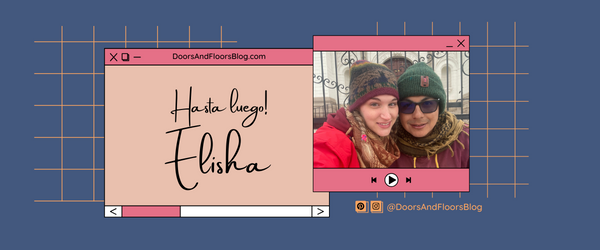
Invisible illness, something real, but unseen.
This year, we’re talking about Fibromyalgia all month long. May is our month to bring awareness to what this invisible illness is and how it affects someone mentally, physically, and emotionally.
In previous posts, we’ve discussed Fibromyalgia in the form of a Beginner’s Guide and an Intermediate Guide. Today we’ll dive deeper into Fibromyalgia with the Advanced Guide. Our goal is to really dig down into some of the effects and the toll this chronic pain takes on a person.
Remember to share these posts with your friends and family so we can bring awareness to this invisible illness!
Now let’s jump into the Advanced Guide to Understanding Fibromyalgia and invisible illness.
Disclaimer: The information on this blog is based on personal experiences and should not be considered medical advice. The information on this blog is not intended to diagnose, treat, cure, or prevent any disease.
One: Muscles and the Energy Needed

Fibromyalgia is a chronic pain condition that affects your muscles. Muscles require energy to function. This is true no matter who you are.
With Fibromyalgia, we experience a lot of fatigue. A lot of “empty battery” energy-wise. It’s not as simple as just going to bed “to charge.” Our body doesn’t function that way. This chronic pain condition comes with chronic fatigue. They’re cousins apparently.
Without this “energy,” the muscles don’t repair themselves, and instead, they constantly go, and go, creating what feels like muscle damage, but there’s no visible change. On the inside, it feels like your body just hurts, is wearing down, and you feel helpless. You feel like you haven’t got the strength to stand and walk and participate, or show your emotions.
Fibromyalgia brings a lot of fatigue.
Two: Pain Batches

It appears to me that Fibromyalgia works in “pain batches” or “sections.” By “works” I mean it attacks and affects and hurts in large groups together.
The whole body hurts with Fibromyalgia, but when things start to get worse, different parts of the body are affected first.
Pain may increase in a section of the body or perhaps the left or right half of the body. Just because there is a pain increase in a section or side of the body, doesn’t mean that the rest of the body has stopped hurting, it just isn’t hurting as bad. There has not been a decrease in pain overall, only that one section has increased in pain while another area may not have.
Because of these “pain batches” Fibromyalgia pain is impossible to track. It’s invisible and difficult to understand because of its inconsistency.
Three: Uncomfortable in Your Body.

Have you ever been expected to sit still, in the most uncomfortable position, in the most uncomfortable seat and you couldn’t ask for a new seat, and changing positions didn’t change anything? That seat, that is your body. That is Fibromyalgia.
Your seat looks the same as everyone else’s seat, so complaining is futile.
Your seat has all the same pieces and parts as everyone else’s seat. Asking for a new one is inappropriate.
Regardless, your seat is incredibly uncomfortable. And you cannot understand why everyone else can sit in their seat day in and day out and have no issues. Your seats appear to be identical.
You don’t know how to relax in your seat. Just existing in it makes you scrunch up your shoulders to your ears and curl your toes. What an uncomfortable seat.
You are constantly moving in the seat to try to get comfortable. No matter what position you try it always hurts you and leaves you uncomfortable, aching, and stressed.
It’s as if you are trapped inside this seat. No matter what good habits you implement or things you try to do.
If only you could trade your seat for a different one, perhaps then you could relax and feel comfortable again.
Four: Invisible (Illness)

Apparently, I am going to use a lot of metaphors today to help you understand Fibromyalgia, please bear with me.
Picture this, you walk into a room full of people and you are painted bright purple from head to toe. Somehow nobody notices or says anything. No one comments on the obvious elephant in the room, that you are, in fact, a purple human.
That’s it. This is Fibromyalgia. Invisible to everyone on the outside, even though it’s so blatantly obvious to those of us who experience it.
Fibromyalgia is an invisible illness. We can see it. We can feel it. It should be as obvious as if we were people with purple skin. Yet somehow nobody is staring at it or noticing.
Which I guess is good in a way. I mean, I wouldn’t want to be stared at or pointed at. But the fact that nobody notices, nobody knows, nobody considers Fibromyalgia a real thing – that makes it feel invisible.
I know, it’s an invisible illness. Apparently, it is so invisible that a smile can hide the pain on a bad day, and nobody will ever know.
Five: Self-conscious About Every Touch

Touch is an interesting thing. It’s like…you want it, to show you’re human and worthy of contact. But all the little things make you keenly aware of the pain associated with them. They make you want to crawl out of your skin.
Hand holding. Knocking on doors. A shirt tag or brand new shoes. Cuddling or when someone rests their head on your shoulder. Every touch, every feeling, every texture of the fabric or of the chair or the bed…we notice and overanalyze because it either hurts or causes irritation.
With Fibromyalgia, every touch triggers the brain to tell the body to run away from it because it increases pain. But we’re trying not to run away or freak out…or hurt. We want the touch and hugs or to cuddle. We want to be loved on by our loved ones. However, with each touch, we will notice everything about that contact.
Six: Migraines and Headaches

Migraines and headaches are quite common with Fibromyalgia.
That constant ache in the body, in your shoulders, hands, and toes, it doesn’t just stop there. Sometimes people who have Fibromyalgia, also have consistent migraines or headaches.
You wake up with one. You work a whole day through one. They come several times a week, if not daily. And are difficult to get rid of.
Invisible illness is a whole-body thing. It hurts from head to toe. The pain doesn’t just stop in one place, it migrates to different areas of the body, including the head.
Final Thoughts
It’s important to understand that those who fight an invisible illness daily, also have to do so while functioning through normal daily responsibilities. We have to work and answer phone calls all day with a migraine pulsing in the back of our minds. Or we have to chop veggies and prepare dinner for ourselves and our family after a long day of typing with our aching hands or running around on our feet all day.
This is why it’s important that we talk about what Fibromyalgia is. This is why we discuss it. Because Fibromyalgia is invisible. If we don’t speak up, no one will. Who will understand us if we don’t seek to educate and share?
It is our job to help the invisible become seen and the unknown become known.
Help me spread awareness about this invisible illness and make Fibromyalgia known by sharing this post and following me on Instagram @Doorsandfloorsblog.
Let me know in the comments if you found this post helpful!
To learn more about Fibromyalgia and how it affects someone’s life and body, check out the Begginer’s Guide To Fibromyalgia and the Intermediate Guide To Fibromyalgia. And share them with your friends and family!
Together we can make this invisible illness known, and seen. We can love those who battle it every day.
Together we can keep fighting and encourage those in their fight.







